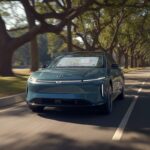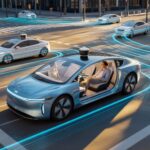1. Battery Technology and Advancements
Solid-State Batteries
- High Energy Density: Solid-state batteries can store more energy in the same amount of space compared to lithium-ion batteries, which translates to longer driving ranges.
- Safety: The use of solid electrolytes reduces the risk of battery fires and explosions.
- Challenges: Issues such as high manufacturing costs, scalability, and longevity still need to be addressed.
Battery Recycling
- Processes: Mechanical shredding and hydrometallurgical processes to recover valuable metals like lithium, cobalt, and nickel.
- Innovations: Companies like Redwood Materials and Li-Cycle are pioneering new recycling methods.
- Impact: Reducing the environmental impact and dependence on mining for raw materials.
Battery Lifespan
- Degradation: Research into minimizing battery degradation through better thermal management and advanced battery chemistries.
- Second-Life Applications: Using old EV batteries for energy storage systems, extending their useful life.
2. Charging Infrastructure
Fast Charging Networks
- Superchargers: Tesla’s Supercharger network and other fast-charging networks like Electrify America are expanding.
- Ultra-Fast Charging: Development of 350 kW chargers that can add significant range in minutes.
- Grid Impact: Managing the impact of fast chargers on the electrical grid.
Wireless Charging
- Inductive Charging: Using electromagnetic fields to transfer energy between a charging pad and a receiver on the vehicle.
- Dynamic Charging: Research into charging vehicles while they are moving on specially equipped roads.
Standardization
- Universal Connectors: Push towards universal standards like the Combined Charging System (CCS) and CHAdeMO.
- Interoperability: Ensuring that all EVs can use various charging networks seamlessly.
3. Range and Efficiency
Extended Range EVs
- New Models: Vehicles like the Tesla Model S Plaid and Lucid Air offering ranges of over 400 miles.
- Range Anxiety: Addressing consumer concerns about running out of power on long trips.
Energy Efficiency
- Aerodynamics: Improving vehicle designs to reduce drag and increase efficiency.
- Powertrains: Advances in electric motor technology and power electronics to improve overall efficiency.
4. Autonomous Driving
Integration with EVs
- Synergies: Combining EVs with autonomous technology to optimize energy use and enhance safety.
- Ride-Hailing: Companies like Waymo and Cruise developing autonomous EV fleets for ride-hailing services.
Regulations and Safety
- Standards: Establishing safety standards and regulatory frameworks for autonomous vehicles.
- Testing: Extensive testing to ensure reliability and safety in real-world conditions.
5. Government Policies and Incentives
Subsidies and Tax Credits
- Incentives: Federal and state tax credits, rebates, and grants to reduce the upfront cost of EVs.
- Programs: Government programs to support the development of charging infrastructure.
Emission Regulations
- Mandates: Countries and states setting timelines to phase out internal combustion engines.
- Compliance: Automakers adapting their strategies to meet stricter emissions targets.
6. Environmental Impact
Life Cycle Analysis
- Cradle-to-Grave: Assessing the environmental impact of EVs from production to end-of-life.
- Sustainable Practices: Incorporating renewable energy and sustainable materials into manufacturing processes.
Renewable Energy Integration
- Solar Charging Stations: Using solar panels to power charging stations.
- Smart Grids: Integrating EVs into smart grids to enhance energy efficiency and stability.
7. Market Growth and Trends
Global Market Expansion
- Emerging Markets: Growth in countries like China and India due to government support and increasing consumer awareness.
- Market Penetration: Increasing market share of EVs in traditionally strong ICE markets.
Consumer Preferences
- Eco-Conscious: Growing consumer preference for environmentally friendly vehicles.
- Luxury and Performance: High demand for high-performance EVs from brands like Tesla, Porsche, and Rivian.
8. New Models and Technologies
Electric SUVs and Trucks
- Popularity: High demand for electric SUVs and trucks due to their versatility and appeal.
- Models: Launches like the Tesla Cybertruck, Rivian R1T, and Ford F-150 Lightning.
Vehicle-to-Grid (V2G) Technology
- Energy Storage: Using EV batteries to store and supply energy back to the grid during peak demand.
- Grid Stability: Enhancing grid stability and reducing reliance on fossil fuel power plants.
9. Corporate and Industry Developments
Automaker Commitments
- Pledges: Companies like General Motors, Volkswagen, and Volvo committing to fully electric lineups in the coming decades.
- Investments: Massive investments in EV technology, production facilities, and supply chains.
Partnerships and Collaborations
- Strategic Alliances: Partnerships between automakers, battery manufacturers, and tech companies to accelerate EV development.
- Joint Ventures: Collaborations to build charging infrastructure and develop new technologies.
10. Sustainability and Ethical Sourcing
Ethical Mining Practices
- Supply Chain Transparency: Ensuring ethical sourcing of materials through transparent supply chains.
- Certifications: Adopting certifications and standards for responsible mining practices.
Sustainable Manufacturing
- Carbon Neutrality: Automakers aiming for carbon-neutral production processes.
- Recycled Materials: Increasing use of recycled and sustainable materials in vehicle production.
These deep dives provide a comprehensive overview of the key areas driving the electric vehicle industry forward and the challenges and opportunities within each.



